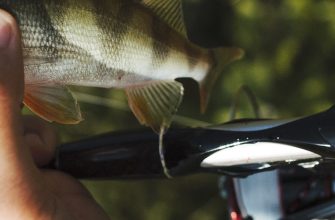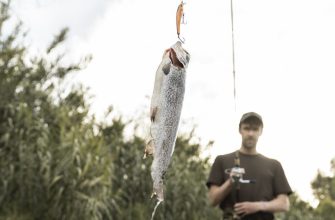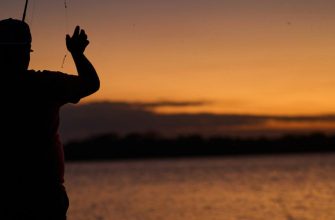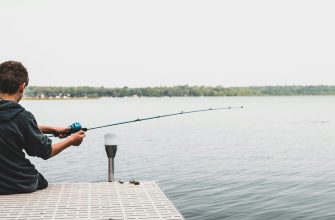- About the Green River, Utah
- Geographical Location
- Overview of Green River
- John Jarvie Historic Ranch
- Why Choose Green River for Trout Fishing
- Green River Sections Explained
- Section A: Flaming Gorge Dam to Little Hole
- Section B: Little Hole to Indian Crossing in Browns Park
- Section C: Indian Crossing to the Colorado/Utah border
- Essential Gear for Fly Fishing
- Choosing the Right Fishing Rod
- Importance of Quality Fishing Lines
- Selection of Fishing Flies
- Necessary Protective and Comfort Equipment
- Best Time for Fly Fishing in Utah
- Understanding Utah’s Fishing Seasons
- Ideal Weather Conditions for Fly Fishing
- Peak Times for Trout in Utah
- Trout Fly Fishing The Green River
- Common Trout Species in the River
- Understanding Trout Behavior
- Techniques for Successful Fishing
- Tips for a Successful Float and Fishing the Green River
- Techniques for Fishing from a Float
- Ensuring a Safe and Enjoyable Fishing Trip
- Green River Fly Fishing Guides
- Reading a Green River Fishing Report
- Finding and Hiring Green River Guides
- Laws and Regulations for Green River Fishing
- Utah Fishing Licenses
- Green River Local Fishing Permits
- No Permit Requirement in Certain Areas
- Little Hole Regulations
- Green River Directions and Camping
- How to Get to Green River
- Best Camping Sites Near River
- Rules and Regulations for Camping
- Exploring the vicinity of Utah’s Green River
- West Fork Duchesne
- Currant Creek Reservoir
- Strawberry Reservoir
- Starvation State Park
- Flaming Gorge National Recreation Area
- Dinosaur National Monument
- Conclusion
- FAQs
- Q: What makes the Green River a popular fishing destination?
- Q: Can you fish in Utah all year round?
- Q: Where is Fish Lake located?
- Q: What are some common flies used for fly fishing on the Green River?
- Q: Are there professional guides available for Green River fly fishing?
- Q: What are some other fishing destinations near the Green River?
- Q: Can you describe the experience of fly fishing on the Green River?
- Q: Are there any restrictions or regulations for fishing on the Green River?
- Q: What types of watercraft are suitable for fishing on the Green River?
- Q: Is the Green River suitable for watersports other than fishing?
Welcome to your ultimate guide on one of the most appealing and thrilling adventures you can embark on in Utah – trout fishing on the Green River. The Green River, with its picturesque landscapes, is a paradise with a rich history that started decades ago. The river is teeming with opportunities to create unforgettable memories.
Our friend, Logan, is teeming with enthusiasm about the Green River. He has frequented the area, and his experiences have been nothing short of amazing. He’ll be sharing his insights and tips throughout this guide.
Dan takes us on a journey down the river, highlighting the b or c sections, which are renowned for their challenging yet rewarding experiences. You will find his advice particularly helpful if you’re new to the area.

Bear in mind, that there could be days when the river seems unfishable due to weather conditions or other unforeseen circumstances. But don’t worry, we’ve got you covered with alternative activities to keep your spirits high.
So, buckle up and prepare to explore the wonders of the Green River with us. We hope this guide inspires you to experience the thrill and joy of trout fishing on the Green River.
About the Green River, Utah
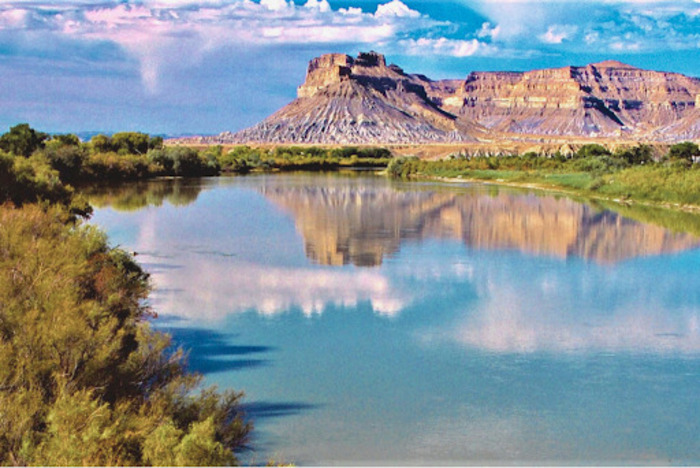
Geographical Location
The Green River, a significant water body in the Western United States, snakes its way through Utah. This majestic river starts in the Wind River Mountains of Wyoming, winding its way through Utah and merging with the Colorado River in Canyonlands National Park.
Overview of Green River
The Green River, aptly named for its unique emerald hue, is a popular destination for outdoor enthusiasts. Among the river’s many offerings, trout fishing stands out. The river’s clear, cool waters create the perfect habitat for trout, with the tailwater fishery in the area below Flaming Gorge Dam being particularly renowned.
Read more: Mastering the Art of Fishing for Trout in a River
John Jarvie Historic Ranch
The John Jarvie Historic Ranch adds a touch of history to the Green River’s picturesque landscape. Located in Browns Park, the ranch offers a glimpse into the life of Scottish immigrant John Jarvie. The ranch was a significant commercial center in the late 19th century, and today, it stands as a testament to the area’s rich history.
Why Choose Green River for Trout Fishing
Choosing the Green River for trout fishing is a decision you’ll never regret. The river is home to a thriving population of brown trout and rainbow trout (steelhead), making it a paradise for anglers. The area below the Flaming Gorge Dam, in particular, is known to have some of the highest trout densities in the world. The river’s consistent flows and temperatures provide an ideal environment for these fish, promising a rewarding fishing experience.
Green River Sections Explained
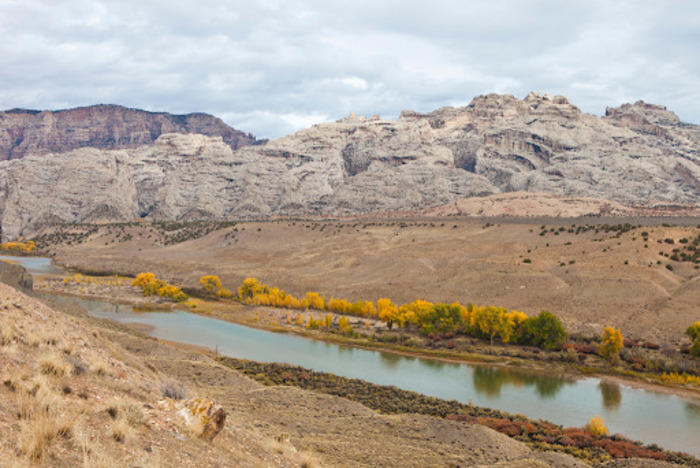
Section A: Flaming Gorge Dam to Little Hole
This stretch of the Green River, extending from the Flaming Gorge Dam to Little Hole, is a paradise for anglers. It is renowned for its abundance of trout, particularly steelheads and browns. The clear, cold waters released from Flaming Gorge Dam create a prime habitat for these fish. The river here is easily accessible, with a trail that follows the bank for the first seven miles. It’s an excellent spot for a day of rewarding fly-fishing.
Section B: Little Hole to Indian Crossing in Browns Park
The second section of the Utah Green River takes you from Little Hole to Indian Crossing in Browns Park. This segment is less crowded than Section A, providing a more tranquil and intimate fishing experience. The river meanders through scenic canyons and valleys, providing stunning panoramic views. Here, the trout are larger and more challenging to catch, making it an exciting option for more experienced anglers.
Section C: Indian Crossing to the Colorado/Utah border
The final stretch, Section C, takes you from Indian Crossing to the Colorado/Utah border. This part of the river is the least fished due to its remoteness, but don’t let that deter you. It’s a hidden gem, rich with browns and steelheads. The serene landscapes and the thrill of catching a big one in these less-traveled waters make this section a must-visit for any serious angler. However, make sure to plan accordingly as access to this area can be challenging and may require a float trip.
Essential Gear for Fly Fishing

Choosing the Right Fishing Rod
Selecting the right fishing rod for your fly-fishing trip at Green River, Utah can make or break your experience. It’s vital to choose a rod that balances functionality with comfort. A 9-foot rod for a 4 or 5-weight line is typically recommended for this area, providing a good balance of casting capability and control.
Importance of Quality Fishing Lines
The fishing line is your direct connection to the fish, so it’s crucial to opt for quality. Floating lines are most commonly used in this region, as the water conditions in Green River are generally clear and calm. A weight-forward line can help with long casts, while a double-taper line could be beneficial for more delicate short to medium-range casting.
Selection of Fishing Flies
The choice of fishing flies can greatly influence your success in the Green River. The river is known for its abundance of insects, so matching the hatch is an effective strategy. Mayflies, caddis, and midges are particularly common in this region. When in doubt, local fly shops are a great resource for the best fly recommendations for current conditions.
Necessary Protective and Comfort Equipment
Finally, don’t forget the essential protective and comfort gear. This includes a sturdy pair of waders to keep you dry, a wide-brimmed hat for sun protection, and polarized sunglasses to reduce glare on the water. A comfortable pair of wading boots is also a must for navigating the river’s rocky banks. Remember, safety and comfort are just as important as the fishing equipment itself.
Best Time for Fly Fishing in Utah
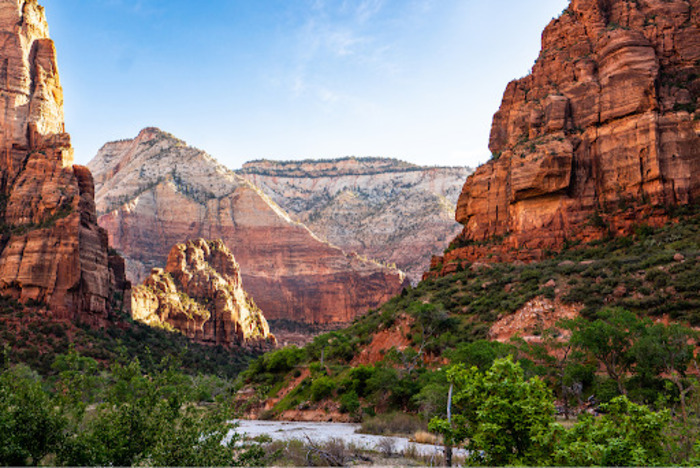
Understanding Utah’s Fishing Seasons
In Utah, the fishing seasons are closely aligned with the life cycles of native trout. The most sought-after time for fly-fishing is typically during the spawning season when trout are actively feeding and are more likely to bite at a well-placed fly. This period usually commences in the spring and extends through the early summer.
Ideal Weather Conditions for Fly Fishing
To maximize your chances of catching trout in Utah, it is crucial to understand the ideal weather conditions for fly angling. Generally, trout are more active during cooler weather conditions. Overcast days are particularly good for fly-fishing as trout feel secure under the cover of clouds and are more likely to venture out to feed. Similarly, early mornings and late evenings, when the temperatures are cooler, are also good times to fish.
Peak Times for Trout in Utah
While trout can be found year-round in Utah, the peak times for trout fishing typically occur in the spring and fall. During these seasons, the water temperatures are just right – not too hot and not too cold – making it an ideal environment for trout to feed. It’s important to note that the specific timing of these peak periods can vary from year to year due to factors such as water temperature and food availability.
Trout Fly Fishing The Green River
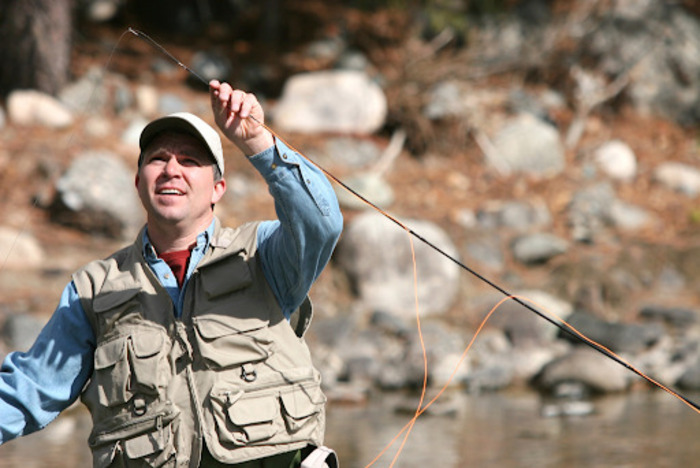
Common Trout Species in the River
The Green River, a gem of Utah, is home to several species of trout. The most common trout are the steelhead and brown trout. Steelheads are known for their beautiful coloration and are a favorite among anglers due to their willingness to bite. Brown trout, on the other hand, offer a bit more challenge, becoming crafty adversaries for even the most experienced anglers.
Understanding Trout Behavior
Understanding trout behavior is crucial for a successful fishing trip on the Green River. Trout are cold-blooded animals, which means their behavior is largely influenced by the temperature of the water. During colder months, they tend to be less active and stay in deeper water. As the water warms up, trout become more active, often feeding near the surface early in the morning and late in the afternoon. Observing the water and understanding these behaviors can significantly increase your chances of a successful catch.
Techniques for Successful Fishing
There are several techniques for successful trout fishing on the Green River:
- Fly-fishing: One of the most popular techniques. This method involves using artificial flies as lures, cast with a fly rod and a fly line. Fly fishing can be challenging, but it’s incredibly rewarding when done right.
- Spinner fishing: Another effective technique. This method uses a spinning lure that mimics the movement of small fish, attracting trout. It’s important to keep the lure moving constantly to create the illusion of life.
- Bait fishing: It is a traditional and often successful method. Using live bait such as worms or minnows can be very effective. However, it’s important to be aware of local regulations, as some areas may restrict the use of certain types of bait.
Remember, patience and observation are key. Understanding the river, the trout, and how to use your techniques effectively will ensure a successful and enjoyable fishing experience on the Green River.
Tips for a Successful Float and Fishing the Green River

Techniques for Fishing from a Float
Floating and fishing the Green River can be a rewarding experience. The river’s diverse fish population, scenic beauty, and the thrill of the catch make it a must-visit for fishing enthusiasts.
- Drift fishing: One technique to consider is the “drift fishing” method. This involves letting your bait drift with the current of the river, keeping it at the right depth where fish are likely to be. This technique allows you to cover a large area of water and can be particularly effective in catching fish.
- Bottom bouncing: Another popular technique is the “bottom bouncing” method. This technique involves bouncing your bait off the bottom of the river. The bouncing motion can attract fish and make them more likely to bite.
Ensuring a Safe and Enjoyable Fishing Trip
Fishing in the Green River can be a fun and exciting experience, but it’s important to make safety a top priority. Always wear a life jacket when on the water, regardless of your swimming ability. The river’s currents can be unpredictable, and a life jacket can be a lifesaver in an emergency.
Remember to check local fishing regulations before you head out. You’ll need a valid fishing license, and there may be restrictions on the type of bait you can use or the number of fish you can catch. Always respect these regulations to protect the fish population and ensure a sustainable fishing experience for everyone.
Lastly, be prepared for changing weather conditions. The weather in Utah can change quickly, and it’s important to have appropriate clothing and gear. Bringing sunscreen, a hat, and plenty of water can help you stay comfortable and safe while on your fishing trip.
Green River Fly Fishing Guides
Reading a Green River Fishing Report
Before you head out to the serene Green River in Utah, it’s important to familiarize yourself with a recent fishing report. These reports provide invaluable information such as the condition of the river, the types of fish that are abundant, and other crucial details. Knowing this information can greatly improve your chances of a successful fishing trip.
Finding and Hiring Green River Guides
Once you’ve read the fishing report and understand the current conditions, it’s time to find a guide. Hiring a qualified guide can be one of the best decisions you make for your fishing trip. They are experienced professionals who know the river inside out and can provide you with tips and techniques to help you catch your dream fish. You can find these guides online or by inquiring at local fishing shops in the area. Remember, the key to a successful fishing trip is preparation and having the right people by your side.
Laws and Regulations for Green River Fishing
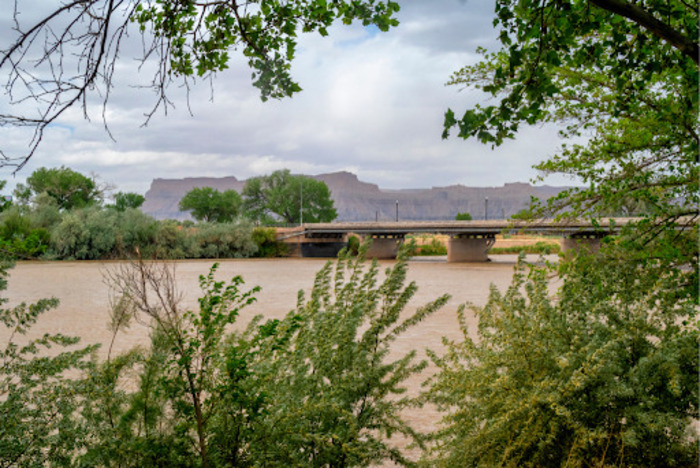
Utah Fishing Licenses
Before you even think about casting your line into the Green River, make sure you have your Utah Fishing License. This is the first step for any angler planning to fish in Utah’s waters. Licenses can be purchased online, at a licensed agent, or Division of Wildlife Resources offices.
Green River Local Fishing Permits
No Permit Requirement in Certain Areas
Now it’s time to take a closer look at the Green River itself. If you’re planning to fish in the stretch from the Flaming Gorge Dam to the Crook Campground and takeout, you’re in luck – no permits are required for private boaters in this area. This is a real boon for locals and visitors alike, allowing them to enjoy the beauty of the river without the need for additional paperwork.
Little Hole Regulations
However, if you’re heading to Little Hole, it’s important to note the rules. Here, fish between 13-20 inches must be released back into the river. This helps maintain the eco-balance and ensures future generations can enjoy the thrill of fishing in these waters. But don’t worry, you can still take home a catch. You’re allowed two fish under 15 inches and if luck is on your side, one fish over 22 inches.
Green River Directions and Camping
How to Get to Green River
Getting to the Green River in Utah is an adventure in itself. If you’re coming from the North, take the I-80 E and US-40 E. From Salt Lake City, it’s about a 3.5-hour drive. If you’re coming from the South, take the US-191 N from Moab.
Best Camping Sites Near River
Camping near Green River provides an unforgettable experience. Dripping Springs Campground is a popular choice due to its proximity to the river and shaded sites. Another favorite is the Green River State Park, which offers both tent and RV campsites, as well as amenities like showers and a boat ramp.
Rules and Regulations for Camping
Remember, when camping near Green River, it’s essential to follow all rules and regulations. All campfires must be contained within a fire pit and fully extinguished before leaving. Trash should be packed out, and wildlife should be observed from a distance. Always check for any specific rules at your chosen campsite.
Exploring the vicinity of Utah’s Green River
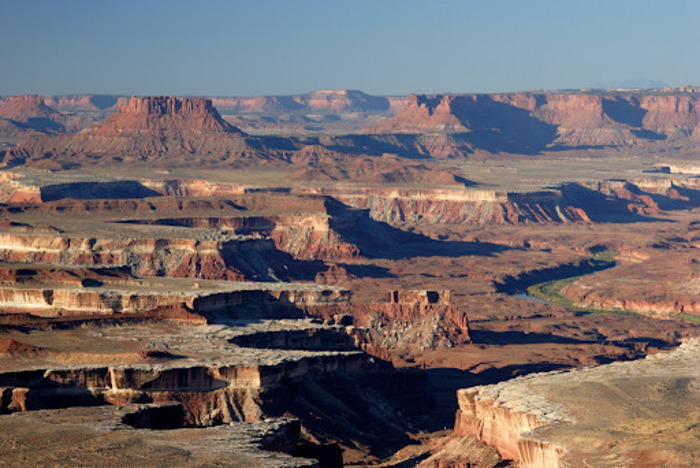
West Fork Duchesne
The West Fork Duchesne, a tributary of the Duchesne River, offers a rustic and peaceful environment ideal for a serene getaway. Its proximity to the Uinta Mountains provides a picturesque backdrop for a day of relaxation.
Currant Creek Reservoir
Currant Creek Reservoir is a hidden gem in the Heber Valley region. It’s an ideal spot for boating and a family picnic. With the stunning view of the Uinta Mountains and its abundant wildlife, it’s a perfect spot for nature lovers.
Strawberry Reservoir
Renowned for its clear, blue waters, Strawberry Reservoir is a popular destination for boating and camping. Its secluded location makes it a perfect spot for those seeking a peaceful retreat away from the city’s hustle and bustle.
Read more: Experience Perfect Fly Fishing for Trout on the Little Red River in Arkansas
Starvation State Park
Starvation State Park, a water recreation hotspot, is surrounded by wide open spaces and offers a variety of outdoor activities. The park is named for Starvation Reservoir, which is popular for fishing and boating.
Flaming Gorge National Recreation Area
Home to the stunning Flaming Gorge Reservoir, this area offers breathtaking views and a multitude of outdoor activities. From boating to hiking, there’s something for everyone in this vast, scenic wilderness.
Dinosaur National Monument
Stepping into Dinosaur National Monument is like stepping back in time. This area is not only home to a plethora of dinosaur fossils, but also offers hiking trails, rafting opportunities, and stunning vistas of the Green and Yampa Rivers.
Conclusion
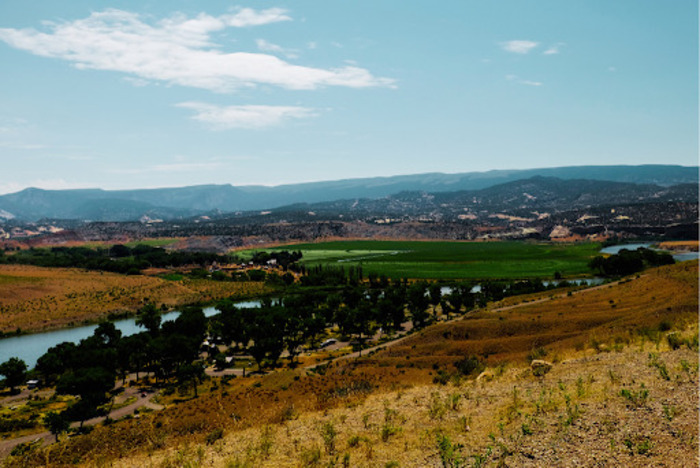
In conclusion, there is no denying the appeal of fly-fishing for trout on the mesmerizing waters of the Green River in Utah. This high desert stream affectionately called the Green below Flaming Gorge, is a sight fishing paradise that any avid fly fisher shouldn’t leave without spending at least one day exploring.
Whether you’re passing through the area or planning a dedicated fly-fishing getaway, the Green River offers surprisingly good fishing year-round. With three sections – A, B, and C – each possessing unique characteristics, you’ll find an unparalleled fishing experience along the river. The gin-clear waters of the Green River below the Flaming Gorge Dam and Little Hole are especially renowned for their dry fly-fishing opportunities, making it a destination that deserves a spot on your next Utah itinerary.
The section of the Green River that flows through the Ashley National Forest offers a fantastic blend of high mountain scenery and prolific hatches. Here, fly fishers can expect to catch the fish of a lifetime, including the indigenous Cutthroat Trout. Moreover, the well-maintained trails and awe-inspiring rock formations of the Red Canyon, located just a few miles below the dam, make the Green River a perfect spot for recreation and relaxation, with opportunities for swimming and camping.
The town of Hurricane, located near Richfield, is also a must-visit. With more than 80 lakes, this area is a freestone dream stream for any angler. Whether you kayak, paddleboard, or plan trips with Green River fly-fishing guides, your adventure on the waters of the Green River is bound to be memorable.
So, why wait? Plan your adventure today and experience the thrill of fishing in one of America’s finest streams. The fish are eating, and the streamer action is just getting started. Don’t miss out on the opportunity to experience the Green River’s unique blend of fantastic fishing and breathtaking scenery. Remember, the best arts of fishing are learned on the stream, so don’t leave without spending at least one day on the waters of the magnificent Green River.
FAQs
Q: What makes the Green River a popular fishing destination?
A: The Green River in Utah is renowned for its world-class trout fishing. With its year-round fishing opportunities and abundance of trout, it has become a popular destination for fly-fishing enthusiasts.
Q: Can you fish in Utah all year round?
A: Yes, Utah is one of the few places where you can enjoy year-round fishing. The Green River, in particular, offers excellent fishing opportunities throughout the year.
Q: Where is Fish Lake located?
A: Fish Lake sits in a picturesque location in Utah, just downstream from the Colorado border. It is known for its scenic beauty and excellent fishing opportunities.
Q: What are some common flies used for fly fishing on the Green River?
A: Fly fishermen often use imitations of scuds, blue-winged olives, and other insect patterns to attract trout in the Green River. These flies are popular choices for anglers targeting trout in the river.
Q: Are there professional guides available for Green River fly fishing?
A: Yes, there are experienced Green River fly-fishing guides who can provide valuable insights and assistance for anglers. Hiring a guide can enhance the fishing experience and lead to more successful outings on the river.
Q: What are some other fishing destinations near the Green River?
A: The Provo River and Logan River are teeming with trout and are popular fishing destinations near the Green River. Anglers can explore these rivers for additional fishing opportunities in Utah.
Q: Can you describe the experience of fly fishing on the Green River?
A: Fly fishing on the Green River offers anglers a chance to experience awe-inspiring scenery and serene surroundings. The river’s lower regions and back eddies provide excellent opportunities for anglers to target trout using various fly-fishing techniques.
Q: Are there any restrictions or regulations for fishing on the Green River?
A: Anglers fishing on the Green River should be aware of any specific regulations or restrictions in place, such as catch-and-release zones, specific fly patterns permitted, or limits on the number or size of fish that can be kept.
Q: What types of watercraft are suitable for fishing on the Green River?
A: Anglers often use drift boats or other watercraft suited for river fishing when navigating the Green River. These boats provide the mobility and stability necessary for successful fly fishing on the river.
Q: Is the Green River suitable for watersports other than fishing?
A: While the Green River is famous for its fly-fishing opportunities, it also serves as a relaxing summer getaway where watersports are king. Visitors can enjoy activities such as kayaking, tubing, and paddleboarding in the waters frequented by anglers and outdoor enthusiasts.

